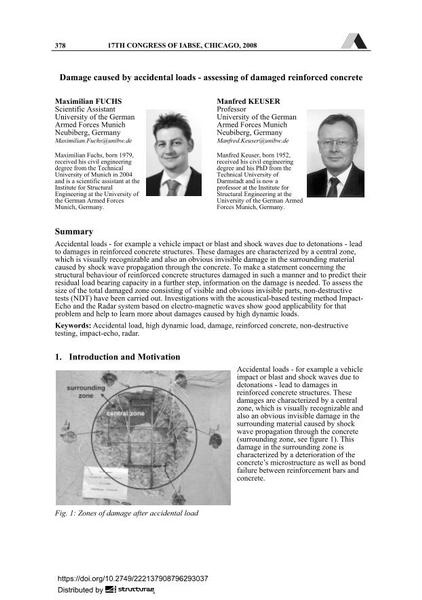Damage caused by accidental loads - assessing of damaged reinforced concrete

|
|
|||||||||||
Détails bibliographiques
| Auteur(s): |
Maximilian Fuchs
Manfred Keuser |
||||
|---|---|---|---|---|---|
| Médium: | papier de conférence | ||||
| Langue(s): | anglais | ||||
| Conférence: | 17th IABSE Congress: Creating and Renewing Urban Structures – Tall Buildings, Bridges and Infrastructure, Chicago, USA, 17-19 September 2008 | ||||
| Publié dans: | IABSE Congress Chicago 2008 | ||||
|
|||||
| Page(s): | 378-379 | ||||
| Nombre total de pages (du PDF): | 8 | ||||
| Année: | 2008 | ||||
| DOI: | 10.2749/222137908796293037 | ||||
| Abstrait: |
Accidental loads - for example a vehicle impact or blast and shock waves due to detonations - lead to damages in reinforced concrete structures. These damages are characterized by a central zone, which is visually recognizable and also an obvious invisible damage in the surrounding material caused by shock wave propagation through the concrete. To make a statement concerning the structural behaviour of reinforced concrete structures damaged in such a manner and to predict their residual load bearing capacity in a further step, information on the damage is needed. To assess the size of the total damaged zone consisting of visible and obvious invisible parts, non-destructive tests (NDT) have been carried out. Investigations with the acoustical-based Impact-Echo-method and the Radar system based on electro-magnetic waves show good applicability for that problem and help to learn more about damages caused by high dynamic loads. |
||||
